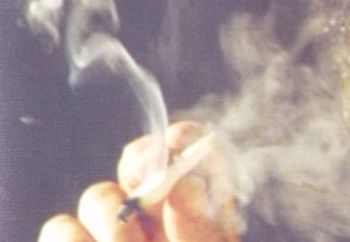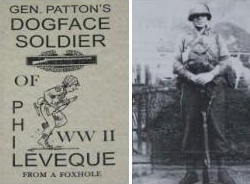
Publisher:
Bonnie King
CONTACT:
Newsroom@Salem-news.com
Advertising:
Adsales@Salem-news.com

~Truth~
~Justice~
~Peace~
TJP
Jul-29-2013 20:00

 TweetFollow @OregonNews
TweetFollow @OregonNews
Marijuana Research in the U.S. Army
Dr. Phil Leveque Professor of Pharmacology Salem-News.comIt’s really quite safe! And the Army knows it.
 Cannabis/Marijuana use has been going strong for 5,000 years. |
(PORTLAND, Ore.) - The history of marijuana in the New World really starts about 5,000 years ago in Asia.
Cannabis/Marijuana (C/MJ) was brought to the Caribbean and Mexico about 1500. Many believe it might have been Christopher Columbus, but regardless, it was the Spanish or maybe the Portuguese who did bring it to Brazil with slaves from West Africa, who might have brought the seeds themselves for medicine and clothes. It allowed the slaves to work longer in the hot sun, if they could have their weed after work.
C/MJ was used in India as an intoxicant about 1,000 B.C. but probably not ingested by smoking. It had several oral preparations.
Some people think that Cannabis was brought to the Caribbean by the English with Asian-Indian laborers, but to me, it was probably brought to what became the British Islands much earlier.
During the building of the Panama Canal many of the workers smoked marijuana and after it was built, American soldiers were stationed there and used marijuana. It was not until about 1930 that the United States Army became concerned about the different effects of Cannabis/Marijuana, compared to alcohol.
The Army physicians recorded their studies in the article “Marijuana Smoking in Panama” in the Military Surgeon July, 1933.
They studied 34 soldiers who had complete access to marijuana from the time they studied the effects of withdrawal.
Their first reference to marijuana-use was in 1916, when the Chief of Police of Panama reported that Puerto Rican soldiers were smoking marijuana which caused unusual “symptoms”.
When higher Army officers visited an Army hospital they found soldier-patients smoking marijuana, as well as four physicians and two Panama policemen.
This started a full investigation with the 34 soldiers examined by a psychiatrist, he reported as follows:
- None exhibited psychotic symptoms;
- The marijuana caused mild intoxication, with the soldiers terms about the effects as “high”, “happy”, “satisfied”;
- Increased appetite;
- Sleepiness;
- Mild withdrawal symptoms;
- No combativeness.
These are all signs and symptoms of the modern users.
If any one thinks that this Army study effects is somewhat of a fluke, keep on reading.
In recent years, from about 1955 to 1972, the Army and Edgewood Arsenal in Maryland tested 2,000 soldiers (volunteers) with synthetic marijuana (THC), LSD, and 20 other psycho-active drugs.
In general, they have found marijuana use to cause... hilarity.
Enough said. So much for the Army and marijuana studies.
MANY SOLDIERS ARE STILL USING IT WHEN THEY CAN. |

 Got a question or comment for Dr. Leveque?
Got a question or comment for Dr. Leveque?
Email him: Newsroom@Salem-News.com
More information on the history of Dr. Leveque can be found in his book, General Patton's Dogface Soldier of WWII about his own experiences "from a foxhole".
Order the book by mail by following this link: Dogface Soldier
If you are a World War II history buff, you don't want to miss it.
Watch for more streaming video question and answer segments about medical marijuana with Bonnie King and Dr. Phil Leveque.
Click on this link for other articles and video segments about PTSD and medical marijuana on Salem-News.com: Dr. Leveque INTERVIEWS & ARTICLES
Articles for July 28, 2013 | Articles for July 29, 2013 | Articles for July 30, 2013
Quick Links
DINING
Willamette UniversityGoudy Commons Cafe
Dine on the Queen
Willamette Queen Sternwheeler
MUST SEE SALEM
Oregon Capitol ToursCapitol History Gateway
Willamette River Ride
Willamette Queen Sternwheeler
Historic Home Tours:
Deepwood Museum
The Bush House
Gaiety Hollow Garden
AUCTIONS - APPRAISALS
Auction Masters & AppraisalsCONSTRUCTION SERVICES
Roofing and ContractingSheridan, Ore.
ONLINE SHOPPING
Special Occasion DressesAdvertise with Salem-News
Contact:AdSales@Salem-News.com

googlec507860f6901db00.html



Terms of Service | Privacy Policy
All comments and messages are approved by people and self promotional links or unacceptable comments are denied.
[Return to Top]
©2025 Salem-News.com. All opinions expressed in this article are those of the author and do not necessarily reflect those of Salem-News.com.